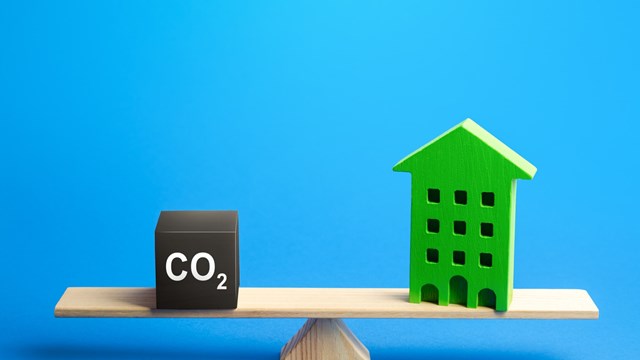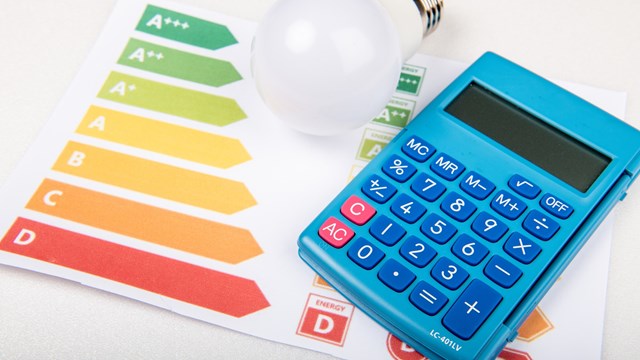
Change is good, as the saying goes. And it’s even better when that change both saves money and helps the environment. Sometimes, though, change can be difficult. That’s especially true when it affects the places we live and possibly impacts our wallets. This is why residents can be a bit reluctant when their board or management announces a shift to greener living, a change that inevitably will help save energy and improve living conditions but may also cost a few dollars to get the ball rolling.
For management, the key to a successful transition often rests with how well they can persuade residents to champion the change. With the right facts at their disposal, that effort should be relatively painless, especially when homeowners begin to see the benefits of lower energy costs and a healthier building environment.
Why Go Green?
From Governor David Paterson to Mayor Michael Bloomberg and others, New York’s elected officials have been active in their support of moving the city in a greener direction. This has been evident in the number of initiatives as well as local and state enterprises established in recent years to help reduce carbon emissions, improve air quality and reduce energy dependence. Part of that ongoing effort has focused on the greening of residential buildings.
“We have a very efficient transportation system,” says Tom Lynch, director of external affairs for the New York State Energy Research and Development Authority (NYSERDA). As a city, though, “that means that a much heavier portion of our carbon emissions are coming from buildings.”
This carbon footprint is comprised of energy usage, among other factors. For example, if a 50-story residential building is drawing its energy from a coal plant upstate, that counts toward the footprint—as does the use of oil for heating and any other emissions that might be emanating from the structure.
Green building eliminates or significantly reduces the size and scope of this carbon footprint and the residence’s overall ecological impact. This is accomplished through a wide array of options, from changing the type of heating oil used or switching to natural gas; replacing aging windows with high-efficiency windows; improving insulation; reducing the use of water and recycling wherever possible and much more.
Other green building characteristics include more efficient HVAC systems, better air circulation and quality, the use of non-toxic materials in new construction. “You know how good a new car smells?” Lynch says. “There’s bad stuff in those chemicals.” And many of those chemicals can be found in buildings. Even using non-toxic carpet, cushions and adhesives can change a residential building for the better.
Russell Albanese, president of The Albanese Organization, Inc., in Garden City, says he has noticed a trend toward greener building as well as retrofits on older buildings looking to save on energy and contribute to a cleaner environment. “In order to really make a difference, the stock of existing buildings in New York City needs to be addressed.” As technology advances, addressing those issues in a less financially painful manner is becoming more feasible. “More and more systems and equipment are suitable for retrofits,” Albanese says. “There’s a tremendous need and also a tremendous opportunity.”
Albanese’s firm has become a leader in green building in New York City. His building, the Solaire, was one of the first residential constructions in the city to make eco-friendly construction and building systems an overarching priority, from recycling water to reducing energy costs. The 293-unit building in Battery Park City offers humidification and ventilation systems that provide filtered fresh air to all units; Energy Star fixtures; building materials free of chemicals such as formaldehyde; and common areas that include occupancy sensors and daylight sensors that optimize energy use. Nineteen percent of the building itself was made from recycled materials. One of the firm’s other buildings, the Visionaire, has earned a LEED Platinum certification, the most difficult green building rating to achieve. According to Albanese, these buildings have drawn residents who are concerned not only with living better but also with leaving a better legacy for future generations.
“There’s a sense of pride for residents,” Albanese says. Residents and staff take their ecological devotion beyond where they live and look at how they live. “They’ve really gone above and beyond in terms of education,” he says. “For example, there is a household battery recycling program, a used clothing collection, [and] green cleaners are used throughout the building.”
Savings & Quality of Life
Besides the positive feelings and improved karma, green living is also about dollars and cents. Converting systems and practices in an existing building initially can be expensive—something that may cause nervousness on the part of boards and residents alike. In the long run, though, those costs should be mitigated by ongoing energy savings.
Organizations such as NYSERDA can help guide managers and boards through the process. For example, programs like the New York Energy $mart Multifamily Performance Program provide buildings with engineers or energy consultants who will examine the building and its systems and pinpoint opportunities for improvement. Buildings can benchmark their energy performance and then, based on that relative rank, receive a performance target. If the building achieves that efficiency target, it might be eligible for a series of NYSERDA financial incentives to help offset the initial costs of that energy reduction.
The Towers Cooperative, an eight-building complex located in Jackson Heights, Queens, went through an energy audit in 2006. “We decided to do it because everyone sees how the cost of energy is going up, up, up,” says Bobbi Turner, the building’s manager since 1986. “The cost of electricity was going up, too.”
Going through the study, Turner says, “was great. [The auditor] looked at every inch of the complex. They gave us a completely independent look at our buildings, not like a contractor trying to sell us something.”
The Towers buildings were constructed in the 1920s, “So it’s not like we can build a green building,” Turner says. “We have to try to retrofit as easily as we can.” When the audit was complete, the Towers was given a list of suggested changes. “We implemented the things we could do in-house very easily,” Turner says. Those changes included switching to compact fluorescent bulbs in all public spaces, including exteriors and adding thermostatic radiator valves in individual apartments. “In most New York City apartments, everyone complains that it’s too hot. This provides individual control, allowing people to regulate amount of heat they get.” This prevents energy wasters like leaving windows open in the winter to cool down an apartment.
The Towers also added insulation to boiler pipes and other areas as well as on the roof. As regular maintenance and upgrades are made to the buildings, green choices are implemented wherever possible. “It’s become part of our routine,” Turner says.
“We’ve worked with a lot of different folks,” says Colleen Ryan, assistant director of communications for NYSERDA. As with the Towers, more people are looking for ways to improve their buildings, especially with the rising price of oil. “People are becoming more aware now with these energy costs.”
Initially, Lynch says, there might be a two to four percent increase in costs to go green, “but in the long run, you’re going to save on energy-efficient performance.” When it comes to persuading residents to perhaps invest a bit more of the building’s budget on going green, focusing on the positives of cost savings can help make the case.
“Reducing your costs going forward is important,” Lynch says. “We don’t know where energy prices are going. All fossil fuels are going to continue to be very volatile. We’re seeing small reductions [in oil prices] right now, but these are still record highs. By adding efficiencies, you can control these costs going forward.”
Plus, the initial investment on adding green technologies will not be an impediment forever. “As more green buildings are built, we become better at constructing them. And when that happens, prices come down.”
Residents, too, are altruistic. “Most people want to do the right thing and take care of our planet,” Lynch says. “They want to leave the world better for sons, daughters and grandchildren.”
Letting people know what’s going on and why it’s being done is imperative. When the Towers engaged in their energy audit, they invited energy auditing firm Power Concepts to make a presentation at their annual shareholder meeting. “You wouldn’t think an engineer talking about energy efficiency was going to be popular,” Turner says, “but the meeting was very highly attended. He spoke for two hours, and he could have talked all evening. The shareholders loved him. It gave the shareholders a sense of involvement, that they could ask questions of him and get answers.” For shareholders, making these changes “makes you feel like you have control over something,” says Turner, which is especially rewarding when that something is energy costs, an entity that can make anyone feel powerless.
Beyond improving energy efficiency and reducing the carbon footprint, residents also can be encouraged to support green changes simply because it can improve their quality of life. For example, green buildings can provide better air quality. “There’s healthier air to breathe in a green building,” Lynch says, adding “how do you calculate the benefit of less asthma? We have tremendous asthma rates in the city.” How can we put a dollar value, he says, “on fewer doctors’ visits and less missed work?”
Making the transition to green living does not need to be intimidating or overwhelming. Often, boards and residents might think that changes need to be big to be effective. “Just take it step by step,” Ryan says. “Every little thing they can do helps.”
Turner agrees. While her building complex is looking to make bigger changes in the future, they have already seen progress with seemingly small adjustments like the compact fluorescents and radiator valves. “We’ve been able to do the things that can be done right now,” she says. “And the people in the building have been very happy about it.” Electric bills have decreased thanks to the new lighting and residents are enjoying the fact that they can control their apartment temperatures—something which will conserve energy down the road.
Small steps matter, Turner says. And those steps start with information. The Towers were so pleased with the results of their energy audit that Turner says, “I think every building should go through this.”
When big and small changes alike can make a difference in financial savings, resident health and ultimately, the global environment, what’s not to like about going green?
Liz Lent is a freelance writer and a frequent contributor to The Cooperator.









3 Comments
Leave a Comment